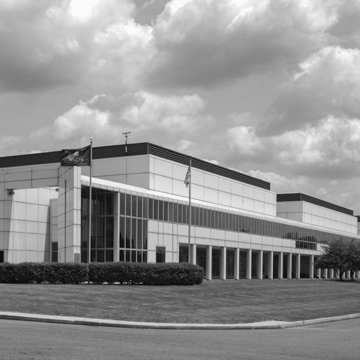Amidst the green quiet of the northern tip of Montgomery County is this austere futurist-appearing plant where Knoll produces its internationally known architect-designed furniture. The building consists of three production modules joined by a continuous one-story portico that terminates at the west end in a more complicated corner with an angled intersecting plane that marks the location of a museum of Knoll furniture. The white enameled metal panels with a strip of red above marking the ventilation are juxtaposed against a local stone wainscot. Knoll built its plant here to capitalize on the survival of German craft tradition that provided a skilled workforce.
Across Water Street from the main entrance to the Knoll plant, Peevy Road is carried on a tiny one-lane steel truss bridge, made by the Columbia Bridge Works of Dayton, Ohio, in 1880. Just beyond the bridge is a modest gambrel-roofed water-powered mill, built in 1891 by Monroe and Mary Jane Snyder. With its mill keeper's house next door, this complex attests to the continuation of waterpower well into the era of steam.


